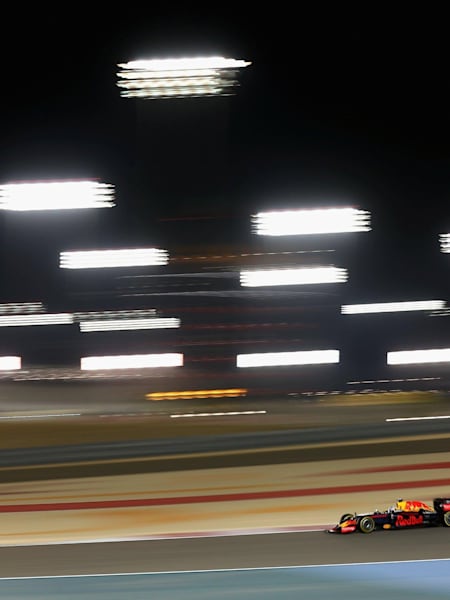
Other forms of motorsport can quibble, but F1 sits at the pinnacle of the racing pyramid. It features the highest speeds, the fastest laps and the biggest teams in motorsport: nothing goes around a racing circuit faster than a Formula One car.
This doesn’t come cheap: F1 teams have annual budgets extending into the hundreds of millions of dollars, they employ hundreds – potentially thousands – of people and build a new car every year. The difference between a World Championship-winning team and hopeless also-ran is around one percent of performance.
The history
The Formula One World Championship began in 1950 with cars that shared little in common with the machines used today – but Formula One is relentlessly adaptive in pursuit of speed. The huge lumbering beasts of the early 1950s gave way to lighter, more nimble machines. Engines moved from the front to the rear of the car, steel gave way to aluminium and then carbon fibre.
Tyres became fatter, streamlined cars sprouted wings to provide downforce – literally pushing the cars into the road surface – and then ground-effect skirts appeared, sucking the car to the track – more downforce means more grip, more grip means more cornering speed. Engine technologies improved, with turbos arriving, departing and returning with added direct injection and hybrid technology.
The calendar
The series has its origins with a handful of races around the grand old circuits of Europe. It grew steadily until the end of the 1990s and then exploded with new races in more exotic locations springing up every year.
This season involves 21 races crisscrossing the globe, visiting Australasia, the Middle East, Europe, North and South America, South East Asia and the Far East. The season lasts for nine months of the year, running from March to November.
Teams and the race weekend
In the modern era, and barring incident, each team is expected to enter two cars into every race. Beating your team-mate is considered the benchmark of success, as he is the only other competitor with machinery of identical performance. The event takes place over three days.
The first features two 90-minute practice sessions, the second day a further 60-minute practice session, followed by an hour of qualifying, with lap times in this session used to determine the order in which the cars will line up on the grid at the start of the race. The race is staged over 200 miles or two hours, whichever comes first – though with modern speeds, the two hour limit is only very rarely breached.
The Championships
There are two complimentary but distinct championships being contested during the F1 season. The first in the Formula One World Championship for Drivers, the second the World Championship for Constructors. The Drivers’ Championship is decided by a simple points tally at the end of the season, while the Constructors’ Championship is the combined tally from both cars. Only the Top 10 finishers are awarded points at a race.
The car
An F1 car consists of three central elements onto which everything else is attached. The most important is the survival cell, affectionately known as the ‘tub’. This incredibly strong carbon composite moulding is where the driver sits. It's designed to protect him in even the most brutal of impacts – so much so that it's not uncommon to see a driver slam into a wall at more than 100mph, undo his seat belts, stomp back to the pit lane and explain to the media how the crash was somebody else’s fault.
The engine is bolted to the back of the chassis, and the gearbox is bolted to the back of the engine. Suspension, bodywork, hydraulics and ancillaries and bolted to this central axis.
The Formula One engine
Formula One is a hybrid racing series, which is why you’ll sometimes hear people talking about the ‘power unit’ rather than the engine. The reality is that the internal combustion engine (ICE) is only one part of a system which also features two hybrid motor-generators.
The first recovers energy when braking, in a manner similar to a road-going hybrid car. The second – the one that’s really ground-breaking – recovers energy from the flow of exhaust gases in a manner that's both similar to but also entirely unlike a water wheel. The flow of hot gas in the exhaust spins a turbine attached to a generator that provides power to an electrical turbocharger with compressed air going into the ICE, with surplus power routed to a battery pack. Despite being comparatively tiny, the modern power unit is the most powerful race engine F1 has ever had.










